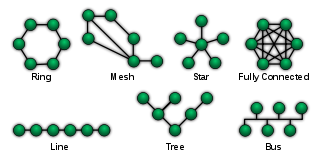This is a short video which explains how and why to create a systems map
from the connections made between indicators at GINManila2012
Lots of business diagram examples Business Diagrams Software. Business work flow, business equipment management, client information samples etc. Example of Business Diagram, Business Diagrams, Business Diagram Examples, Business Diagram samples, Business Diagram Templates.
Showing posts with label Business Diagrams. Show all posts
Showing posts with label Business Diagrams. Show all posts
Saturday, October 6, 2012
Friday, August 26, 2011
Network diagram for business initial setup
A network diagram is a type of network. A network in general is an interconnected group or system, or a fabric or structure of fibrous elements attached to each other at regular intervals, or formally: a graph.
A network diagram is a special kind of cluster diagram, which even more general represents any cluster or small group or bunch of something, structured or not. Both the flow diagram and the tree diagram can be seen as a specific type of network diagram.

In computer science the elements of a network are arranged in certain basic shapes (see figure):
Source: http://en.wikipedia.org/wiki/Network_diagram
A network diagram is a special kind of cluster diagram, which even more general represents any cluster or small group or bunch of something, structured or not. Both the flow diagram and the tree diagram can be seen as a specific type of network diagram.
Types of network diagrams
There are different types network diagrams:- Artificial neural network or "neural network" (NN), is a mathematical model or computational model based on biological neural networks. It consists of an interconnected group of artificial neurons and processes information using a connectionist approach to computation.
- Computer network diagram is a schematic depicting the nodes and connections amongst nodes in a computer network or, more generally, any telecommunications network.
- In project management according to Baker et al. (2003), a "network diagram is the logical representation of activities, that defines the sequence or the work of a project. It shows the path of a project, lists starting and completion dates, and names the responsibilities for each task. At a glance it explains how the work of the project goes together... A network for a simple project might consist one or two pages, and on a larger project several network diagrams may exist" . Specific diagrams here are
- Project network: a general flow chart depicting the sequence in which a project's terminal elements are to be completed by showing terminal elements and their dependencies.
- PERT network
- Neural network diagram: is a network or circuit of biological neurons or artificial neural networks, which are composed of artificial neurons or nodes.
- A semantic network is a network or circuit of biological neurons. The modern usage of the term often refers to artificial neural networks, which are composed of artificial neurons or nodes.
- A sociogram is a graphic representation of social links that a person has. It is a sociometric chart that plots the structure of interpersonal relations in a group situation.
Gallery
-

Artificial neural network
Network topologies

Diagram of different network topologies.
- Full Mesh: Every node is connected to every other node. Most redundant and expensive.
- Partial Mesh Is similar to a full mesh, but some nodes still have to go through others to get to its final destination. Offers some redundancy and not as expensive as full mesh.
- Star: The star network consists of one central element, switch, hub or computer, which acts as a conduit to coordinate activity or transmit messages. Good redundancy and fairly cheap (most common).
- Ring: The ring network connects each node to exactly two other nodes, forming a circular pathway for activity or signals - a ring. The interaction or data travels from node to node, with each node handling every packet. Typically used by small businesses in a P2P design.
- Bus: In this network architecture a set of clients are connected via a shared communications line, called a bus network. Least redundancy and cost (single point of failure).
- Hybrid:Two or more topologies combined for example multiple stars connecting to a fiber backbone (the backbone being a bus topologies), or a ring and a star.
- Tree: This consists of tree-configured nodes connected to switches/concentrators, each connected to a linear bus backbone. Each hub rebroadcasts all transmissions received from any peripheral node to all peripheral nodes on the network, sometimes including the originating node. All peripheral nodes may thus communicate with all others by transmitting to, and receiving from, the central node only.
Source: http://en.wikipedia.org/wiki/Network_diagram
Control Systems guidelines for Business
When designing or analyzing a system, often it is useful to model the system graphically. Block Diagrams are a useful and simple method for analyzing a system graphically.
The control model uses the transformation process in the context of a technology system

The inputs consist of primary (raw materials) and secondary (energy, manufacturing plant, workforce). There are also primary and secondary output representing the main product and bi-products (worn out staff, spent resources etc) {Source1}
 If we have two systems, f(t) and g(t), we can put them in series with one another so that the output of system f(t) is the input to system g(t). Now, we can analyze them depending on whether we are using our classical or modern methods.
If we have two systems, f(t) and g(t), we can put them in series with one another so that the output of system f(t) is the input to system g(t). Now, we can analyze them depending on whether we are using our classical or modern methods.
If we define the output of the first system as h(t), we can define h(t) as:

 In the time domain we know that:
In the time domain we know that:

System 1:
 Blocks may not be placed in parallel without the use of an adder. Blocks connected by an adder as shown above have a total transfer function of:
Blocks may not be placed in parallel without the use of an adder. Blocks connected by an adder as shown above have a total transfer function of:

 In this image, the strange-looking block in the center is either an integrator or an ideal delay, and can be represented in the transfer domain as:
In this image, the strange-looking block in the center is either an integrator or an ideal delay, and can be represented in the transfer domain as:

{Source2}The control model uses the transformation process in the context of a technology system

The inputs consist of primary (raw materials) and secondary (energy, manufacturing plant, workforce). There are also primary and secondary output representing the main product and bi-products (worn out staff, spent resources etc) {Source1}
Systems in Series
When two or more systems are in series, they can be combined into a single representative system, with a transfer function that is the product of the individual systems.
If we define the output of the first system as h(t), we can define h(t) as:
- h(t) = x(t) * f(t)
- y(t) = h(t) * g(t)
- y(t) = [x(t) * f(t)] * g(t)
- y(t) = x(t) * [f(t) * g(t)]

Series Transfer Functions
If two or more systems are in series with one another, the total transfer function of the series is the product of all the individual system transfer functions.
- y(t) = x(t) * [f(t) * g(t)]
- Y(s) = X(s)[F(s)G(s)]

Series State Space
If we have two systems in series (say system F and system G), where the output of F is the input to system G, we can write out the state-space equations for each individual system.System 1:
- xF' = AFxF + BFu
- yF = CFxF + DFu
- xG' = AGxG + BGyF
- yG = CGxG + DGyF
[Series state equation]
[Series output equation]
Systems in Parallel

- Y(s) = X(s)[F(s) + G(s)]
- y(t) = x(t) * [f(t) + g(t)]

State Space Model
The state-space equations, with non-zero A, B, C, and D matrices conceptually model the following system:
 or
or 

In the Laplace Domain
The state space model of the above system, if A, B, C, and D are transfer functions A(s), B(s), C(s) and D(s) of the individual subsystems, and if U(s) and Y(s) represent a single input and output, can be written as follows:Adders and Multipliers
Some systems may have dedicated summation or multiplication devices, that automatically add or multiply the transfer functions of multiple systems togetherSimplifying Block Diagrams
Block diagrams can be systematically simplified.| Transformation | Equation | Block Diagram | Equivalent Block Diagram | |
|---|---|---|---|---|
| 1 | Cascaded Blocks |  |  |  |
| 2 | Combining Blocks in Parallel |  |  |  |
| 3 | Removing a Block from a Forward Loop |  |  | |
| 4 | Eliminating a Feedback Loop |  |  |  |
| 5 | Removing a Block from a Feedback Loop |  |  | |
| 6 | Rearranging Summing Junctions |  |  |  |
 | ||||
| 7 | Moving a Summing Juction in front of a Block |  |  |  |
| 8 | Moving a Summing Juction beyond a Block |  |  |  |
| 9 | Moving a Takeoff Point in front of a Block |  |  |  |
| 10 | Moving a Takeoff Point beyond a Block |  |  |  |
| 11 | Moving a Takeoff Point in front of a Summing Junction |  |  |  |
| 12 | Moving a Takeoff Point beyond a Summing Junction |  |  |  |
{Source1: http://www.mbanotes.org/node/9 }
{Source2: http://en.wikibooks.org/wiki/Control_Systems/Block_Diagrams }
Subscribe to:
Posts (Atom)









